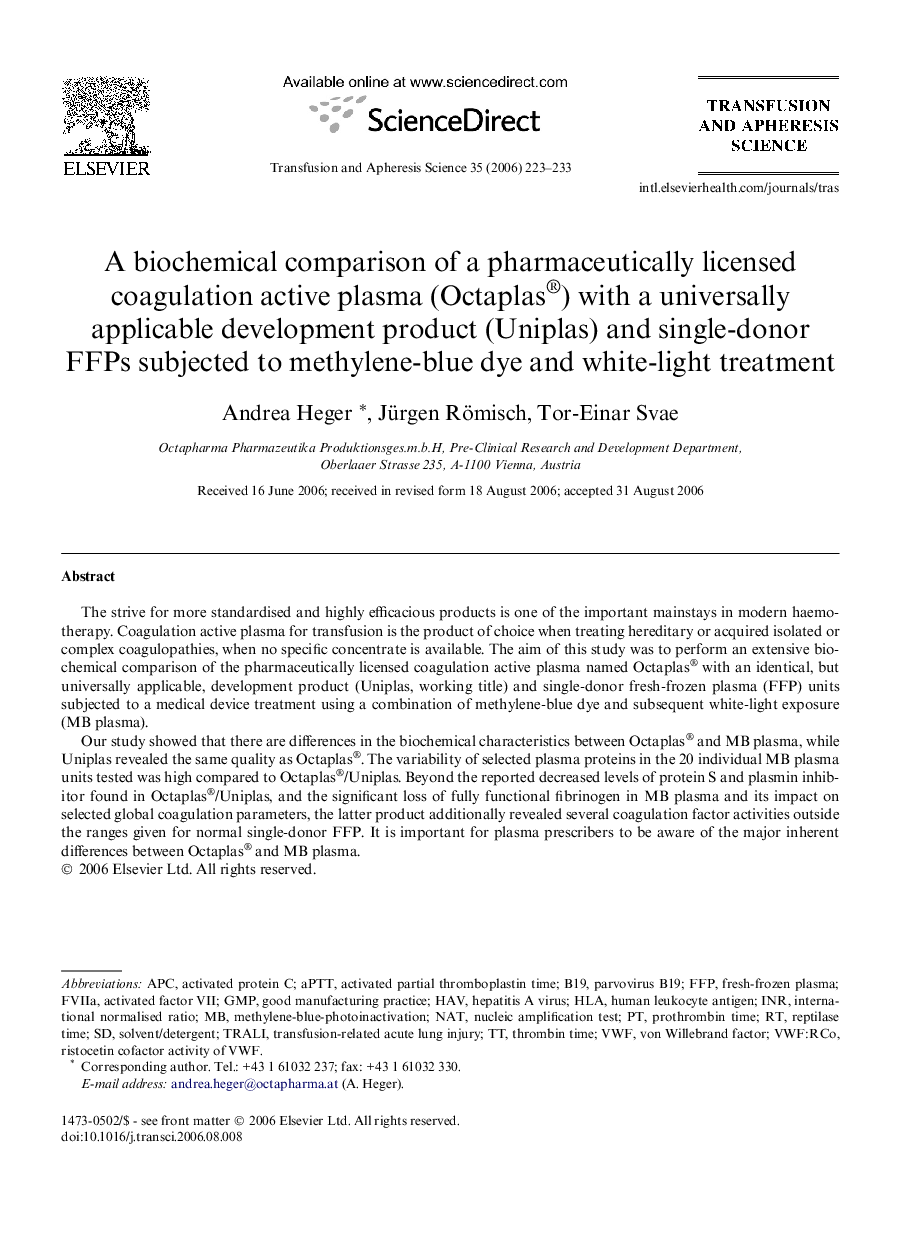| Article ID | Journal | Published Year | Pages | File Type |
|---|---|---|---|---|
| 3336321 | Transfusion and Apheresis Science | 2006 | 11 Pages |
The strive for more standardised and highly efficacious products is one of the important mainstays in modern haemotherapy. Coagulation active plasma for transfusion is the product of choice when treating hereditary or acquired isolated or complex coagulopathies, when no specific concentrate is available. The aim of this study was to perform an extensive biochemical comparison of the pharmaceutically licensed coagulation active plasma named Octaplas® with an identical, but universally applicable, development product (Uniplas, working title) and single-donor fresh-frozen plasma (FFP) units subjected to a medical device treatment using a combination of methylene-blue dye and subsequent white-light exposure (MB plasma).Our study showed that there are differences in the biochemical characteristics between Octaplas® and MB plasma, while Uniplas revealed the same quality as Octaplas®. The variability of selected plasma proteins in the 20 individual MB plasma units tested was high compared to Octaplas®/Uniplas. Beyond the reported decreased levels of protein S and plasmin inhibitor found in Octaplas®/Uniplas, and the significant loss of fully functional fibrinogen in MB plasma and its impact on selected global coagulation parameters, the latter product additionally revealed several coagulation factor activities outside the ranges given for normal single-donor FFP. It is important for plasma prescribers to be aware of the major inherent differences between Octaplas® and MB plasma.
